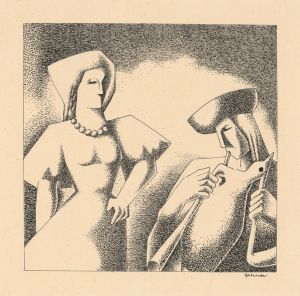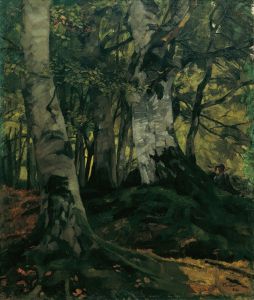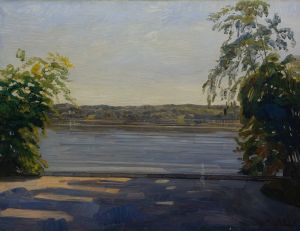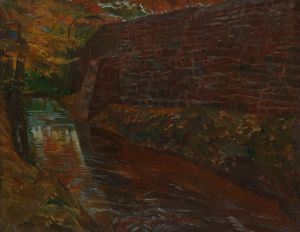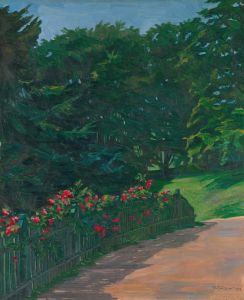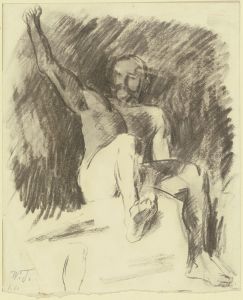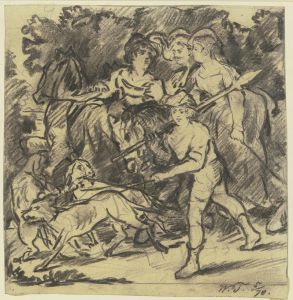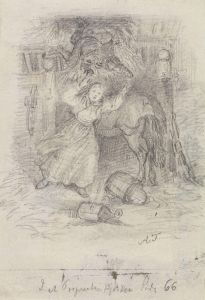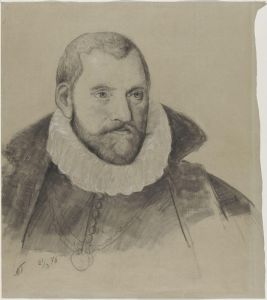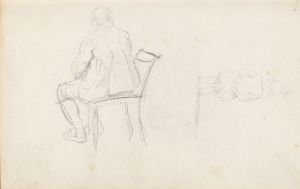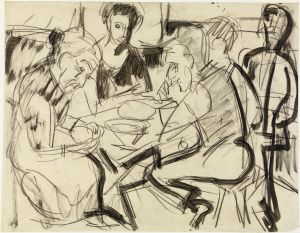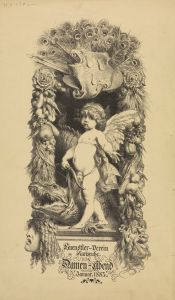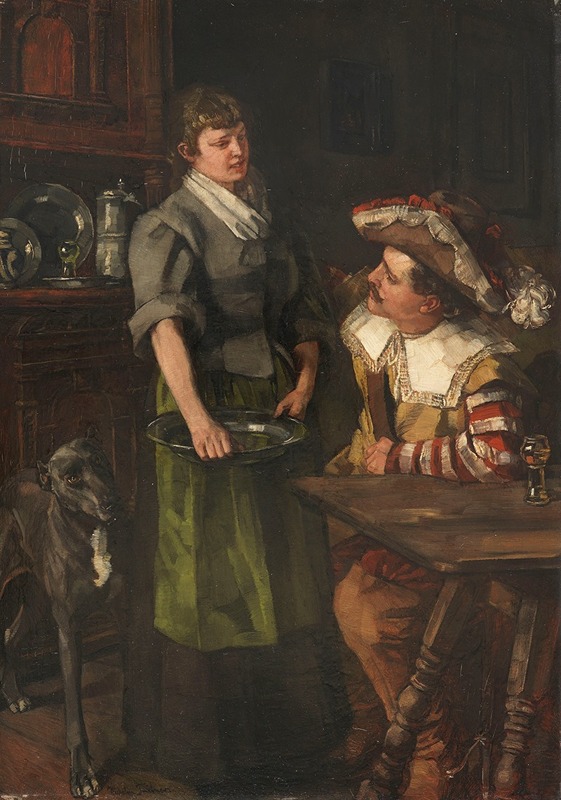
Zechender Landsknecht mit Serviermädchen
A hand-painted replica of Wilhelm Trübner’s masterpiece Zechender Landsknecht mit Serviermädchen, meticulously crafted by professional artists to capture the true essence of the original. Each piece is created with museum-quality canvas and rare mineral pigments, carefully painted by experienced artists with delicate brushstrokes and rich, layered colors to perfectly recreate the texture of the original artwork. Unlike machine-printed reproductions, this hand-painted version brings the painting to life, infused with the artist’s emotions and skill in every stroke. Whether for personal collection or home decoration, it instantly elevates the artistic atmosphere of any space.
Wilhelm Trübner was a German painter associated with the Realist movement, known for his detailed and vivid portrayals of everyday life. One of his notable works is "Zechender Landsknecht mit Serviermädchen," which translates to "Drinking Landsknecht with Serving Maid." This painting exemplifies Trübner's skill in capturing the essence of his subjects with a keen eye for detail and a strong sense of realism.
The painting depicts a scene involving a Landsknecht, a type of mercenary soldier that was prevalent in the 15th and 16th centuries in Europe, particularly within the Holy Roman Empire. These soldiers were known for their distinctive and flamboyant attire, which often included slashed sleeves, bright colors, and elaborate hats. In Trübner's work, the Landsknecht is shown in a moment of leisure, enjoying a drink, which reflects the social and cultural aspects of the time when such soldiers were not engaged in battle.
Accompanying the Landsknecht is a serving maid, who is depicted attending to him. The interaction between the two figures is central to the composition, highlighting the social dynamics and roles within the setting. The serving maid's attire and demeanor provide a contrast to the Landsknecht, emphasizing her role within the scene and adding depth to the narrative portrayed by Trübner.
Trübner's use of color and light in "Zechender Landsknecht mit Serviermädchen" is noteworthy. His palette is rich and varied, capturing the textures and materials of the period's clothing and surroundings with precision. The play of light and shadow adds a three-dimensional quality to the figures, enhancing the realism for which Trübner is celebrated. This attention to detail and the ability to convey texture and form are hallmarks of Trübner's style, aligning him with other Realist painters of his time.
The painting also reflects Trübner's interest in historical themes and his ability to bring them to life through his art. By choosing a subject like the Landsknecht, Trübner taps into a romanticized view of history, one that was popular in the 19th century when there was a renewed interest in the medieval and Renaissance periods. This interest was part of a broader cultural movement that sought to explore and revive historical themes in art and literature.
"Zechender Landsknecht mit Serviermädchen" is a testament to Trübner's skill as a painter and his ability to capture the nuances of human interaction and historical context. His work remains an important part of the Realist movement in Germany, offering insights into the cultural and social fabric of the past through the lens of his artistic vision. Trübner's paintings, including this one, continue to be appreciated for their technical excellence and their ability to convey the richness of everyday life in historical settings.





